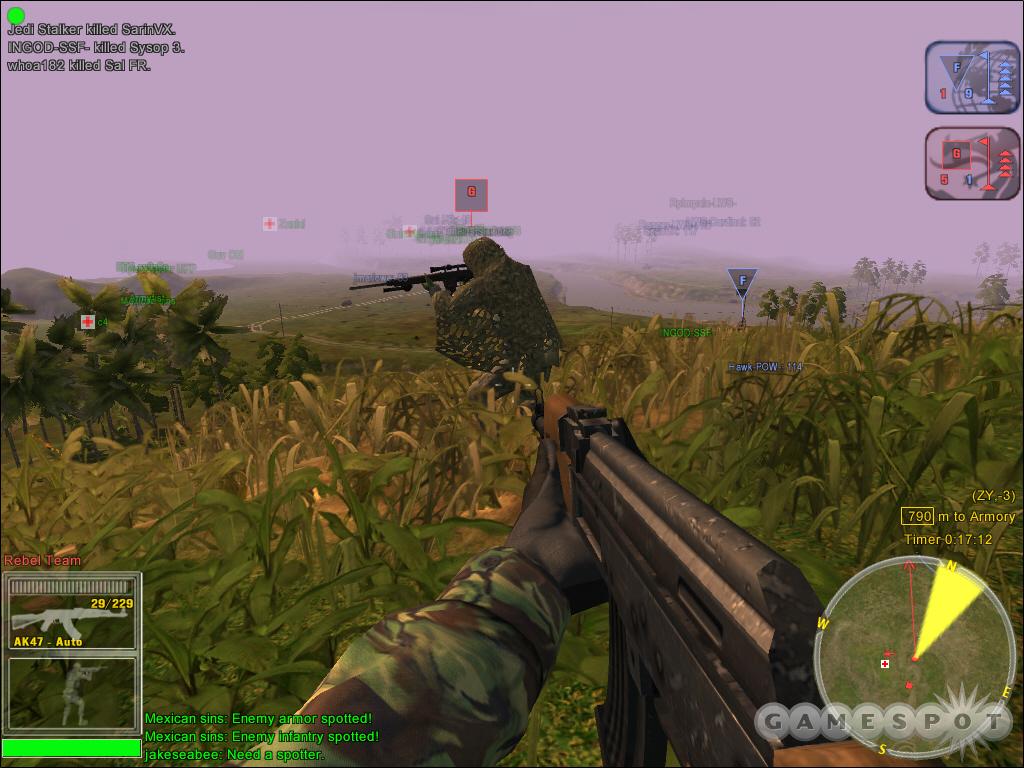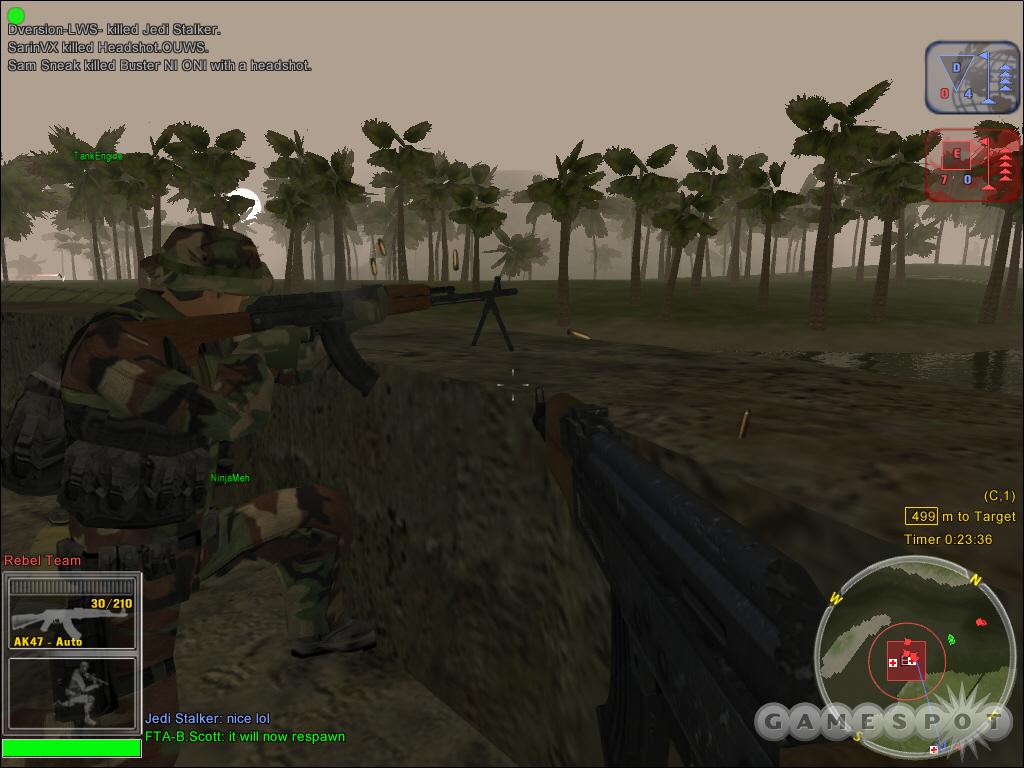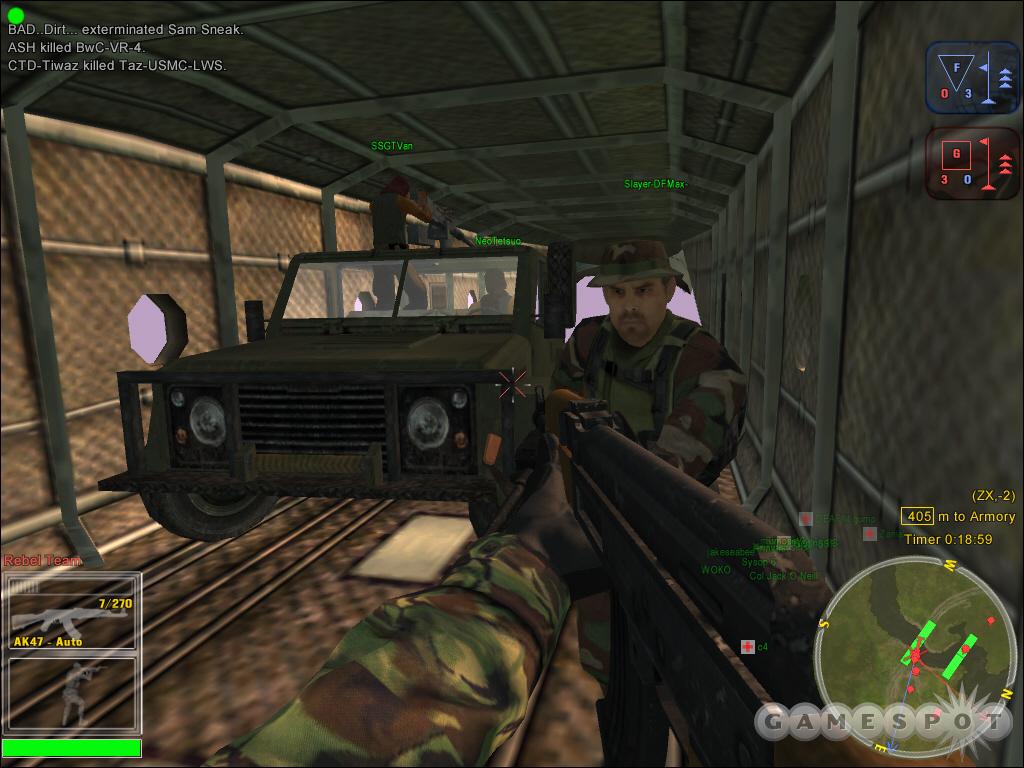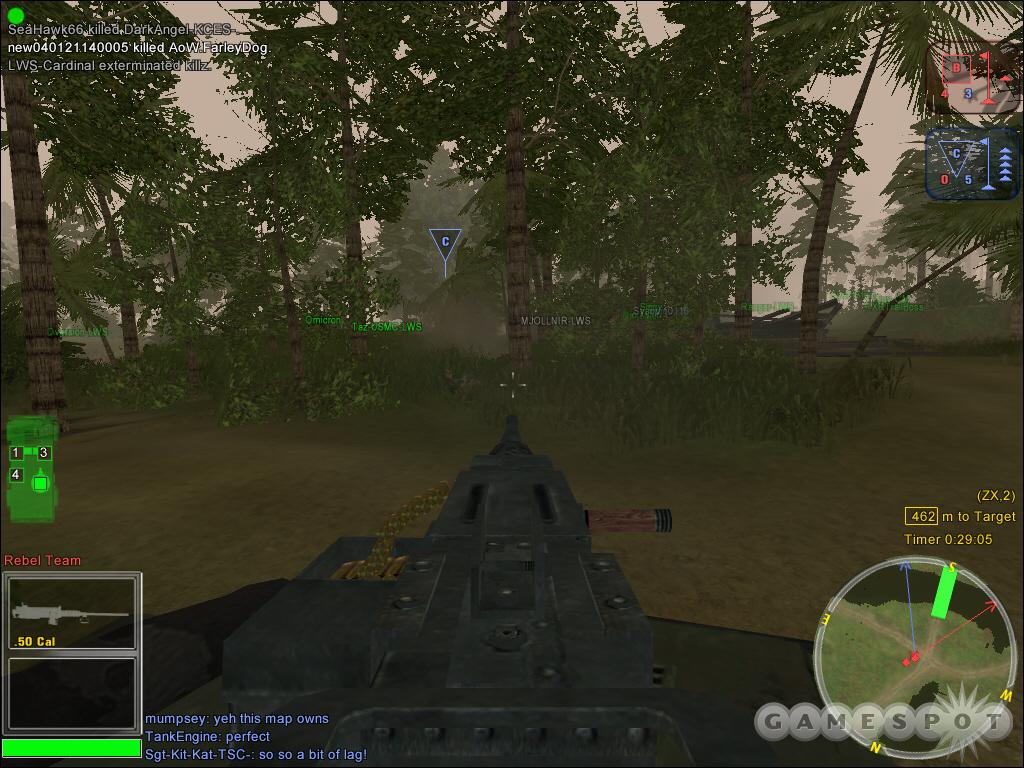Joint Operations: Typhoon Rising Updated Hands-On Impressions - 150-Player Beta
The action gets hot and heavy as we try out NovaLogic's Battlefield killer.
First-person shooters have always been popular multiplayer games, but it wasn't until the arrival of Battlefield 1942 that gamers wholeheartedly embraced the idea of a large-scale, multiplayer shooter with dozens of players on each team. Battlefield 1942 was so successful that Electronic Arts has released Battlefield Vietnam and is working on two more Battlefield games. But NovaLogic, which has long developed and published its own line of military-themed first-person shooters, is taking dead aim at the Battlefield franchise with Joint Operations: Typhoon Rising. We had the opportunity recently to try out Joint Operations for a report from the front lines.

Joint Operations takes place in a near-future conflict in Indonesia. The United States has dispatched its Joint Operations special forces to battle a well-armed rebel insurgency in the jungles of that strategically important and populous nation. In the game, you can play either as the Joint Operations troops or as the rebels, and each has its own unique set of weapons and vehicles at its disposal.
You can pick from a number of classes, including rifleman, engineer, sniper, and medic. Each class comes with its own kit that you can modify by accessing any of the weapon points on the map; there's usually one in each bunker. Since Joint Operations is a modern-day game, you have access to all the latest weapons and equipment, including the M16 and AK-47 assault rifles, the AT-4 rocket launcher, the Dragunov sniper rifle, and an assortment of grenade types, such as flashbangs and fragmentation. There's even a target designator that you can use to mark a target for a fellow teammate equipped with a mortar. Not everyone will look the same, either. You can choose from a large number of skins or appearances. For example, the Joint Ops team can look like US Navy SEALs, Army Rangers, Air Force Special Ops, and more. There's also the ability to customize your appearance by choosing different kinds of headgear and such.
However, the big difference between Joint Operations and Battlefield 1942 is that while most Battlefield game servers max out at 32 or 64 players, Joint Operations can support upwards of 150 players per server (and beta sessions have reportedly featured more than 200 players at once). It's a huge difference in scale, and even though the test game we played had only around 85 players, it still felt larger than most Battlefield games that we've participated in.
We played several matches of the "advance and secure" game mode, in which the goal for both teams is to seize a number of control points located on the map, much like in Battlefield 1942. To seize a control point, you have to basically eliminate all opposition near it and camp, or sit, on top of the control point until it switches sides. Fortunately, your interface will indicate the control points in contention, and it will even give the number of players from each team that are at each control point, so you can quickly decide where you're needed most.

Thanks to the lethal nature of modern weapons, the action is very fast paced and brutal, and you'll die quite a bit. Thankfully, you have a couple of options when you die. You can instantly respawn at your main base by hitting the space bar, or you can choose to wait up to 20 or 30 seconds to spawn at one of your team's control points. If you spawn at your base, you'll have to travel back up to the front lines, though you can usually catch a ride in a vehicle. In addition, medic players can revive their fallen comrades.
It's a Jungle Out There
Given the huge number of players involved, the levels in Joint Operations are quite large, so it takes quite a while to walk, or run, around them. That is where the vehicles come into play. Joint Operations has a number of player-controllable vehicles that you can use as both transport and weapons platforms. These include armored jeeps, Stryker armored personnel carriers, AH-6 Little Bird helicopters, and the massive Russian HALO helicopter, which is the largest helicopter in the world. The HALO is so large that you can drive a couple of jeeps into its cargo compartment and take off, and it's perfect for dropping a mobile strike force deep within enemy territory. 
Unlike in Battlefield Vietnam, helicopters are simple and easy to fly in Joint Operations. In no time, we were flying in formation with another helicopter, screaming in low over an enemy control point while our door gunners and other passengers opened fire at the troops below. This can often be a dangerous proposition, however, because the enemy has access to dangerous antiaircraft weaponry, and you'll usually end up getting shot out of the sky.
You can carry passengers in helicopters and in ground vehicles, so someone can man the machine gun mounted on the back of the jeep (much like in the Xbox and PC game Halo), while others can ride along. The vehicle physics are a bit loose but are on par with what you find in games such as Battlefield 1942 and Far Cry. One great tactic we discovered early on is to load the helicopter with snipers and then chopper them to the top of a hill adjacent to the enemy checkpoints. From there, the snipers can lie down in the tall grasses and pick off the enemy, and if they come under attack, the snipers can fall back to the helicopter and take off again.
Since communication is important, especially between large teams, you have a variety of methods to talk with your teammates. You can use the regular chat or team chat feature, or you can choose from a selection of voice commands. If you jump into a helicopter, you can ask if anybody needs a lift. It's also easy to orient yourself to the battlefield, as the interface has a small circular map in the lower right-hand corner of the screen that displays your immediate surroundings, as well as the direction you have to move.

The game uses a highly enhanced version of the graphics engine used for Black Hawk Down, though it doesn't look like that game at all. Joint Operations packs a lot more stuff into the gameworld, from lush jungles to muddy brown rivers and streams. The terrain is very good at rendering organic and natural-looking terrain features, and it can also model small, terraced rice fields carved into hills and valley walls quite convincingly. The graphics engine is also very fast, and the game has a smoothness and fluidness that the Battlefield games lack. And in what is quite possibly a first for a first-person shooter, Joint Ops appears to model changing light conditions; we started one level at dusk, and over the course of the game it progressively grew darker, until we had to use our night-vision goggles to see effectively. It's definitely a cool feature that's long overdue. The sound effects are very solid, from the distinctive popping noises of the rifles to the thrum of helicopter rotors overhead.
Joint Operations feels like a bigger, faster-paced version of the Battlefield games. The six-month delay that NovaLogic announced at the beginning of this year looks to have paid off, as the preview version we played had no noticeable issues. And you won't have to wait much longer for Joint Operations, because the game is scheduled to ship next month.
Got a news tip or want to contact us directly? Email news@gamespot.com
Join the conversation